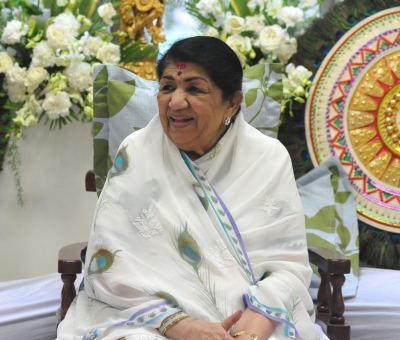By Nivedita KhandekarNew Delhi, Feb 6 : Unlike several other old temples that are hardly known beyond their devotees to the rest of the world, Goa’s Mangeshi temple, about 21 km from Panaji, is popular on the itinerary of tourists who visit India’s Sunshine State.
Mangeshi is the place where the first family of Hindi film music traces its roots to — Lata Mangeshkar and her siblings get their surname from Mangeshi, which is where their father, Master Dinanath, was born in 1900.
Deep inside the heart of Goa, the Mangeshi hamlet, spread across less than 2 sq.km.with about 200 houses, is a part of the Priyol village on the winding Panaji-Fonda road.The main attraction is the little over 450-year-old Mangesh temple built in the typical Goan style, complete with a deep ‘maal’, a vertical decorative pillar with niches to keep earthen oil lamps, and a temple tank.
The present temple was built in 1560 after the main deity was shifted from its original location at Kushasthali in the Salshet (Salcete) area, where the Portuguese had started committing atrocities in the name of conversion.
The temple’s present location was then a part of the Antruj Mahal area, which was never under the Portuguese.
In these many centuries of existence, the entirely private trust-run temple complex underwent major renovations thrice.
Mangesh or Mangirish, an avatar of Lord Shiva, is the principal deity of the Goud Saraswat Brahmin (GSB) devotees of the temple.
There are a number of peripheral temples in the complex that are well maintained and need a walk of almost a kilometre from the main road.
Although Master Dinanath was born in Mangeshi, he shifted very early to Kolhapur to set up his own drama company.But before he left Goa, he underwent a name change.
“Master Dinanath’s mother was a devadasi at the temple.Dinanath himself was a sevekari,” Bhushan Bhave, one of the priests at the Mangeshi temple, said.
Sevekari is a term used for those who carry out various activities related to the temple as a hereditary duty.
They resided in the village; many of them still do.The devadasi system was a matrilineal tradition where women, also known as ‘kalavantin’ because of their knowledge of the performing arts, dedicated their lives to the service of the principal deity.
The British had first sought to stop such practices in the 1930s, stating that they led to prostitution.Goa, however, was then under Portuguese rule.
“Some say his surname was Hardikar, but he came to be known as Abhisheki because he would carry out the ‘abhishek’ at the temple,” Bhave told IANS over the phone from Mangeshi.”When Dinanath migrated to Kolhapur, however, he chose a new identity, Mangeshkar, which meant someone hailing from Mangeshi,” Bhave added.
None of the five Mangeshkar siblings ever lived at Mangeshi, but one or the other would visit the deity occasionally.Despite their occasional association, that tiny spot on the map of India will forever be famous because of the Mangeshkars.
(Nivedita Khandekar can be reached at [email protected])
niv/srb
#Mangesh #Mangeshi #Mangeshkars #Delhi #Shiva #Ali #Carry #Delhi #New Delhi #Goa #Panaji #Kolhapur
.






